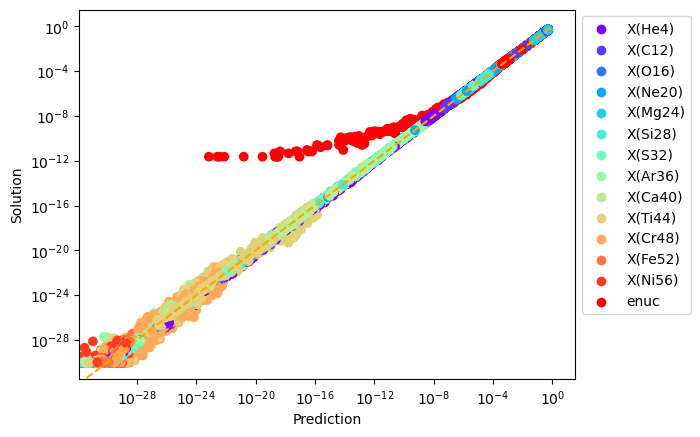
CCSE Home |
Overview |
AMReX |
People |
Publications |
Machine Learning Accelerated Models
CCSE Members of the Machine Learning Development Team
The goal of using machine learning models within an AMReX framework is to accelerate the time-to-solution of computational kernels without reducing accuracy.
Using pyTorch Models in AMReX

|
As a proof of concept, a surrogate model was trained using the solution to a two-component ODE system describing beta decay. The input is a time step and output is the solution representing the mass fractions of the two species. The model itself consists of a dense neural network (DNN) that imposes both mass fractions and mass fraction rates (gradients) as constraints in the loss function. As shown in the solution (top), gradient (middle), and error (bottom) plots on the left, this model converges to the exact solution after approximately 300 epochs. |
Surrogate Model Development for StarKiller Reaction Networks

|
Current development of machine learning capabilities for reaction networks can be found on our GitHub repo at https://github.com/AMReX-Astro/ml-reactions.
For more information, please contact Andy Nonaka
 D. Fan, D. E. Willcox, C. DeGrendele, M. Zingale, and A. Nonaka,
Neural Networks for Nuclear Reactions in MAESTROeX,
The Astrophysical Journal, 940 2, 2022.
[link]
D. Fan, D. E. Willcox, C. DeGrendele, M. Zingale, and A. Nonaka,
Neural Networks for Nuclear Reactions in MAESTROeX,
The Astrophysical Journal, 940 2, 2022.
[link]